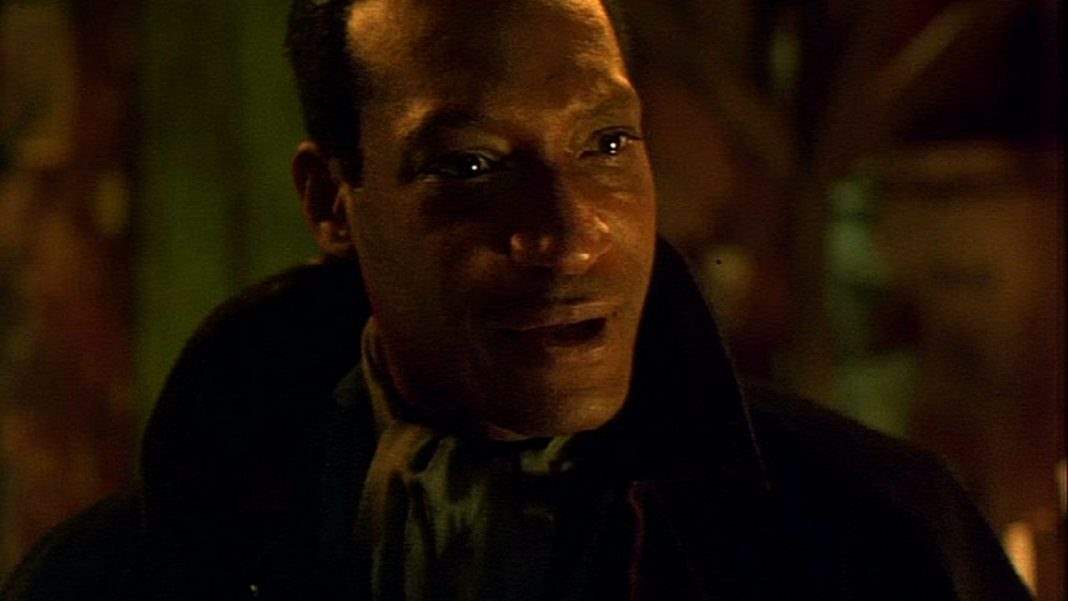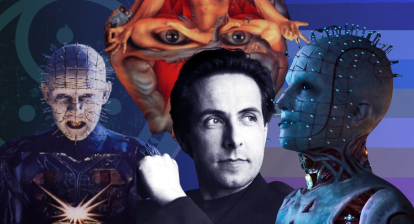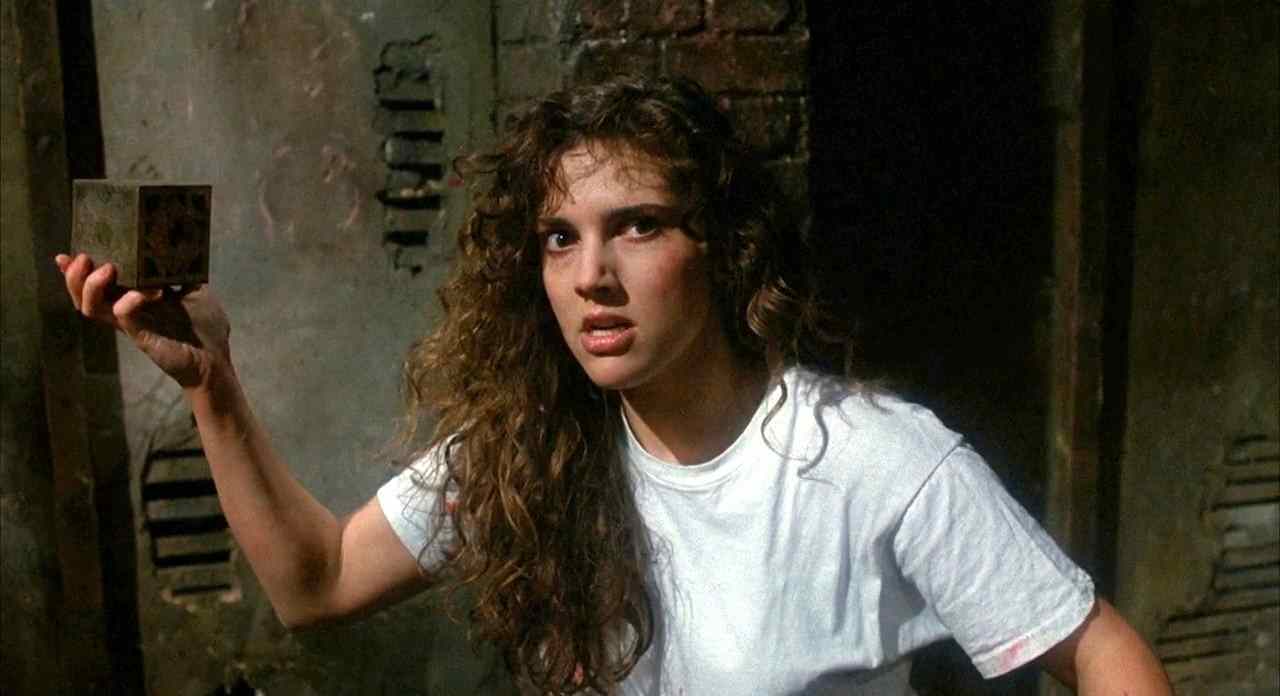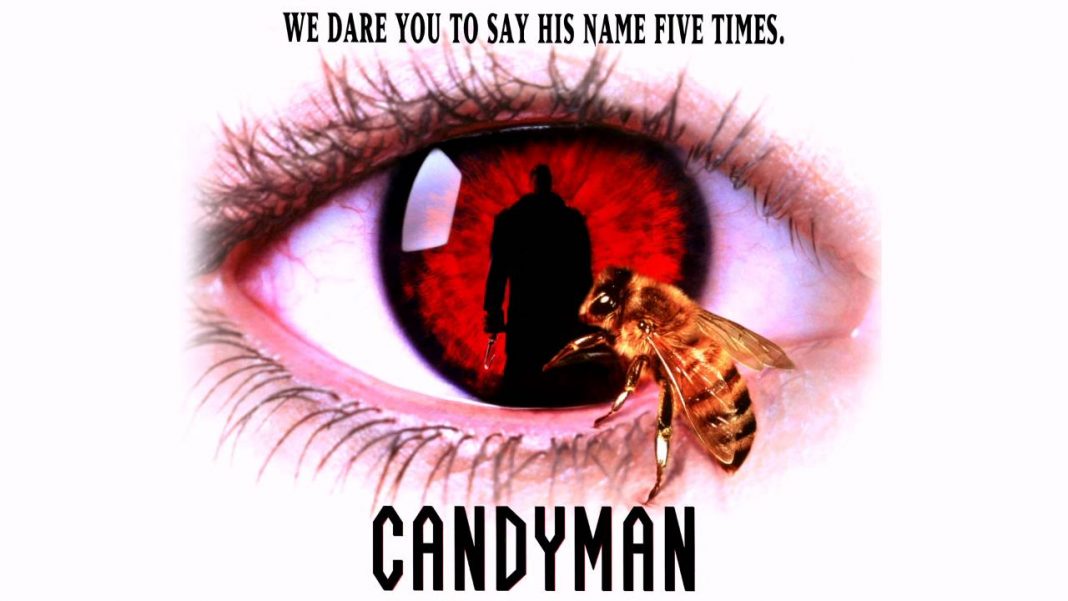Candyman might honestly go down as one of the best horror films of all time. It’s certainly one of the very best of its decade. It starts with such a simple premise—basically the most streamlined urban legend of all, the tale of “The Hook”—and unfolds it and examines it in increasingly fascinating ways. It works on a visceral level. The movie is designed to scare you and it absolutely does that where it needs to, but it’s also an exhaustive emotional journey for its heroine and a reflection on classism, racism and even the nature of macabre stories and why we tell them. With all of that in mind, it’s hardly the picture that would immediately spring to mind as film that would launch a franchise.
Of course, that’s never stopped anyone from trying. Luckily for Candyman, original author Clive Barker is one of the rare storytellers who both wants and is (most of the time) allowed to be involved with the adaptations of his work and their respective sequels. He also has always had an eye for selecting talent. With the original film, he embraced Bernard Rose’s idea to switch the location from the London ghetto to the Chicago ghetto.
That’s important to note, because I think the reason Candyman: Farewell to the Flesh works even half as well as it does is because Bill Condon was allowed to make the movie he wanted to make. It’s a different film, yet at the same time, it’s actually more of a Candyman feature than the original. The plot centers around the character himself, whereas the original was very much about Helen’s psychological journey. There’s plenty of debate—just taking that first feature on its own—as to whether or not the Candyman was even real or if he only existed in Helen’s mind.

The change of location from Chicago to New Orleans perfectly fits a sequel like this. This is a Deep South Candyman story. It’s got a different flavor, more of a Southern Gothic vibe. It’s centered on a family’s inability to communicate with one another and this family drama drives so much Southern horror. At the same time, it feeds into stereotypes in a surprisingly subtle way as the interactions between the lead and the Candyman are vaguely incestuous, given that—in addition to being her attempted murderer—he is technically her ancestor.
And, given Mardi Gras, which is when this sequel is set, there’s no better time to look back at it to remind ourselves that it really is a strong follow-up and a much better movie than most people remember.
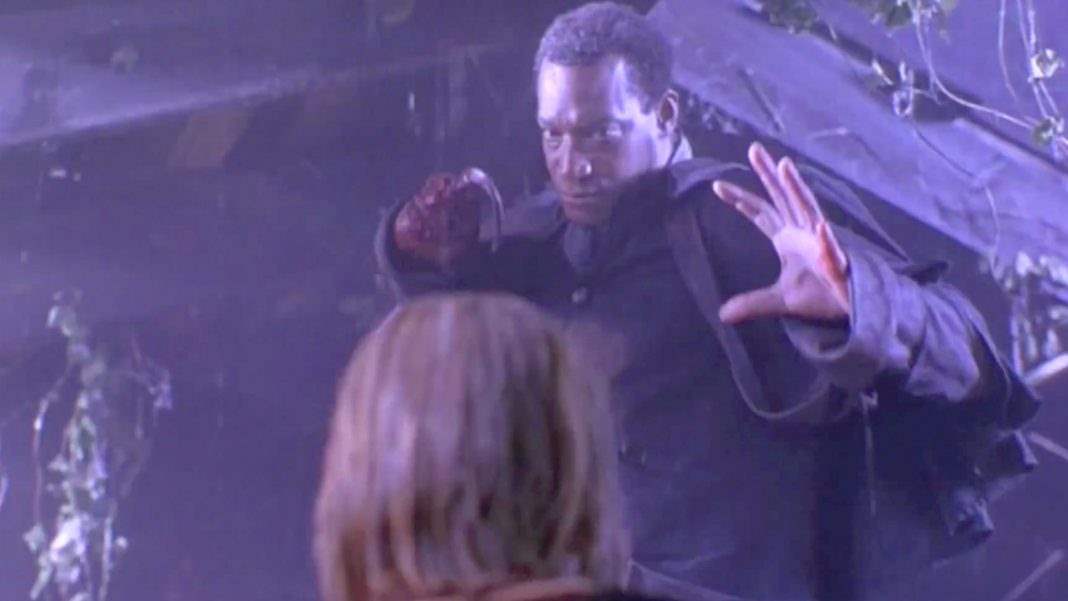 It actually starts off in standard sequel tradition by killing a character from the previous movie, but it does this in an organic way. Purcell was depicted as a Candyman scholar so it only makes sense that he should write a book about the legend. And the way he goes about summoning his murderer—via the book’s mirror-like cover—is excellent.
It actually starts off in standard sequel tradition by killing a character from the previous movie, but it does this in an organic way. Purcell was depicted as a Candyman scholar so it only makes sense that he should write a book about the legend. And the way he goes about summoning his murderer—via the book’s mirror-like cover—is excellent.
Annie is a very different protagonist from Helen, but she certainly has her similarities. Both are investigative in nature and both are targeted by the Candyman for their disbelief. The major difference between them is that while Helen is trying to get to the bottom of the Candyman legend, Annie is investigating the history of Daniel Robitaille, the man. She’s trying to uncover the truth about her own family history, something that has been carefully guarded from her.
On top of that, there’s the police investigation with Annie at the center of it, with her need to prove her brother’s innocence being the thing that turns their attention onto her. Usually, cops in movies like this, hounding the protagonist because they don’t understand what’s really going on, they almost never have any kind of revelation. The charges are dropped by the end of the film and nobody ever really understands why. Farewell to the Flesh took a different approach by actually showing the police how out of their depths they are by bringing them face-to-face with the Candyman. It’s a small touch, but an appreciated twist on a very standard trope.
 As for the Candyman himself, he’s more of a presence than in the original. Some of the mystery is dead now that we’ve already seen him before, so he’s introduced sooner. But, much like Freddy in Dream Warriors, we gain a better understanding of our villain by finding out just a few extra details about him. The plot hinges on the backstory, but it doesn’t drown us in it. It knows when those details are needed and when they’re not, and that makes all the difference. Tony Todd plays this second appearance like a Southern Phantom of the Opera, and it works.
As for the Candyman himself, he’s more of a presence than in the original. Some of the mystery is dead now that we’ve already seen him before, so he’s introduced sooner. But, much like Freddy in Dream Warriors, we gain a better understanding of our villain by finding out just a few extra details about him. The plot hinges on the backstory, but it doesn’t drown us in it. It knows when those details are needed and when they’re not, and that makes all the difference. Tony Todd plays this second appearance like a Southern Phantom of the Opera, and it works.
That’s really true for Farewell to the Flesh as a whole. You wouldn’t expect it to work, but it does. Candyman was not a horror movie that needed a sequel, but it got one. When it did, it made its potential as a franchise very clear. It’s a strong narrative that gave us many different directions for a sequel to go in. Unfortunately, we got Candyman: Day of the Dead, which was a beat-for-beat retread of this film, as if they were hoping that people seeing the third entry would have completely forgotten the second.
That doesn’t take away any of what makes this work as a sequel. If anything, it shows just how strong Farewell to the Flesh really is. The story doesn’t work without its director. It’s a sequel that is deeply tied to its setting, which allows it to have a completely different sense of atmosphere than the first. That’s a good thing. It’s what you expect from Candyman, but you’re getting it in a totally different way. That’s why it’s a sequel that still doesn’t get the credit it deserves, but hopefully that will change.
